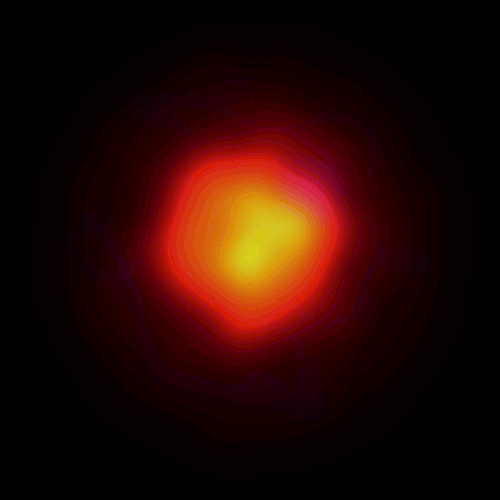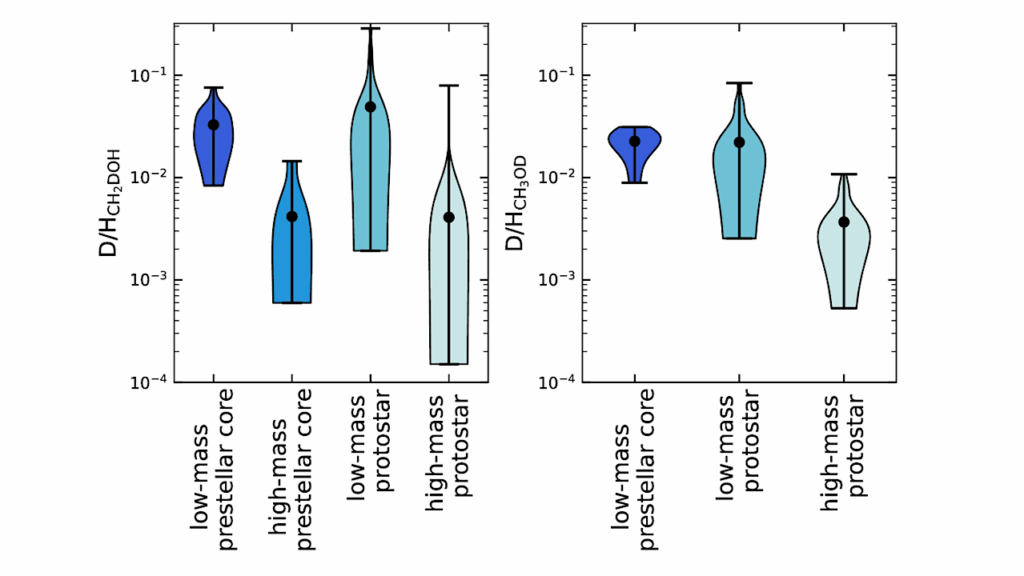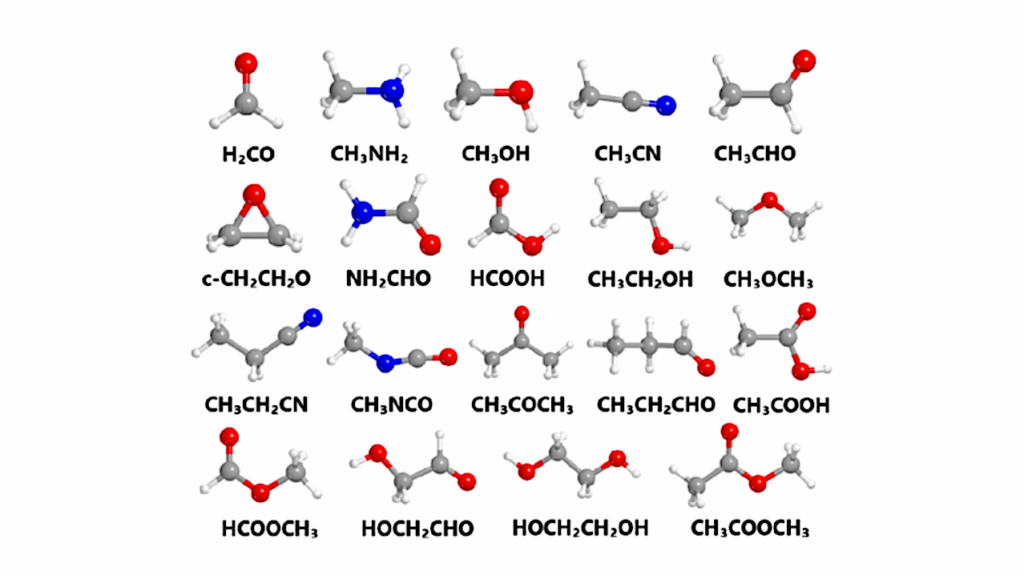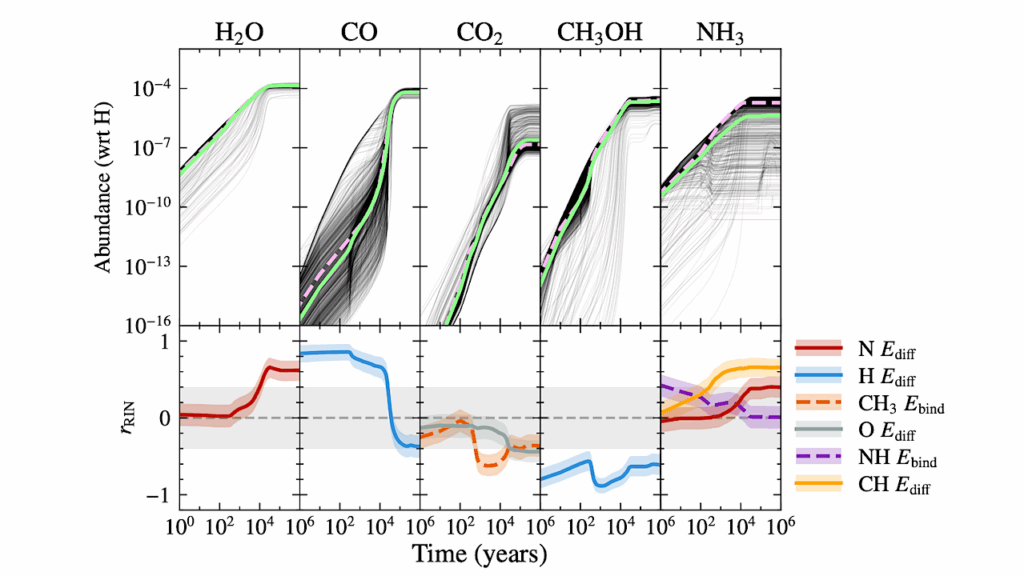R Leporis – Surrounded By A Cloud Of Carbon Compounds – As Imaged By ALMA

The Atacama Large Millimeter/submillimeter Array (ALMA), in which ESO is a partner, has achieved the highest resolution observations since it began operations.
During a technical test, a team of experts from the Joint ALMA Observatory (JAO) in Chile, the National Astronomical Observatory of Japan (NAOJ), National Radio Astronomy Observatory (NRAO) in the USA, and ESO, imaged an evolved star with a resolution of 5 milliarcseconds. This shows ALMA can be used by astronomers to observe objects in detail equivalent to seeing a 10-metre-long bus on the Moon.
ALMA consists of 66 antennas which can be arranged in different positions across the high-altitude Chajnantor plateau in Chile. Each is equipped with receivers that allow it to observe radio waves in different frequency ranges, or bands. ALMA’s resolution increases both as the maximum separation between antennas increases and as the frequency of the observations increases.
The new images were obtained with the most extended configuration possible for the ALMA array, with a maximum separation between its antennas of 16 km. They were made using the Band 10 receivers, which allow ALMA to observe at frequencies as high as 950 GHz, the highest possible for the array.

The evolved star R Leporis observed with ALMA’s highest angular resolution – Peering into the depths of the cosmos, ALMA unveils the enigmatic beauty of R Leporis, a star in the twilight of its life. This high-resolution animation captures the star’s submillimeter-wave radiation in a warm color palette, illustrating the vigorous activity in the star’s outer layers. The cooler hues map the intricate dance of hydrogen cyanide (HCN) masers detected in ALMA’s Band 10 at an impressively high frequency of 891 GHz. The animation shows different parts of the HCN gas moving at varying radial velocities. The color of the velocity indicates the direction it is moving in: redshift (positive velocity) means that the gas is moving away, while blueshift (negative velocity) means it is approaching. The image has an incredibly sharp angular resolution of 5 milli-arcseconds, the greatest resolution that ALMA can currently achieve. This image is a vibrant testament to the dynamic end-of-life processes of stars like R Leporis. Credit: Y. Asaki & N. Lira – ALMA (ESO/NAOJ/NRAO)
Since the observations push ALMA’s capabilities to the extreme, they were incredibly challenging to conduct. While Band 10 receivers have been available at ALMA since 2014, astronomers had to wait for the validation of a novel calibration technique, called band-to-band, to be able to conduct the new observations.
They did so during a technical test in 2021 when they observed an evolved Milky Way star, R Leporis, using a bright galactic core as a calibrator, which, while distant, appears nearby R Leporis in the sky. The results are published today in the Astrophysical Journal.
This result has been achieved with significant support from ESO staff, who were involved in the test observations, the previous experiments in the lead up to this final technical achievement, and the development of the new calibration technique.

In new observations that pushed ALMA capabilities to the extreme, researchers had to develop a new calibration method to obtain the highest-resolution ever image with ALMA. In this so-called band-to-band method, atmospheric fluctuations are compensated for by observing a nearby calibrator in low-frequency radio waves, while the target is observed with high-frequency radio waves. The top right inset image shows the ALMA image of R Leporis that achieved the highest resolution of 5 milli-arcseconds. Submillimeter-wave emission from the stellar surface is shown in orange and hydrogen cyanide maser emissions at 891 GHz are shown in blue. The top left inset image shows a previous observation of the same star using a different array configuration with less distance between the antennas and without the band-to-band method, resulting in a resolution of 75 milli-arcsec. The previous resolution is too coarse to specify the positions of each of the two emission components. Credit: ALMA (ESO/NAOJ/NRAO)/Y. Asaki et al.
More Information
This result was presented in a paper titled “ALMA High-frequency Long Baseline Campaign in 2021: Highest Angular Resolution Submillimeter Wave Images for the Carbon-rich Star R Lep” to appear in the Astrophysical Journal (doi:10.3847/1538-4357/acf619).
The team is composed of Y. Asaki (JAO; NAOJ; SOKENDAI), L. Maud (ESO; Leiden University), H. Francke (JAO), H. Nagai (NAOJ), D. Petry (ESO), E. B. Fomalont (NRAO), E. Humphreys (JAO; ESO), A. M. S. Richards (University of Manchester), K. T. Wong (IRAM; Uppsala University), W. Dent (JAO), A. Hirota (JAO; NAOJ), J. M. Fernandez (Lowell Observatory), S. Takahashi (NAOJ), and A. S. Hales (JAO; NRAO).
A previous technical study, leading to the 2021 Campaign can be found in: “ALMA High-frequency Long-baseline Campaign in 2019: Band 9 and 10 In-band and Band-to-band Observations Using ALMA’s Longest Baselines”, published in the Astrophysical Journal in August 2023 (doi: 10.3847/1538-4365/acd6f1).
ALMA is a partnership of ESO (representing its member states), NSF (USA) and NINS (Japan), together with NRC (Canada), NSTC and ASIAA (Taiwan), and KASI (Republic of Korea), in cooperation with the Republic of Chile. The Joint ALMA Observatory is operated by ESO, AUI/NRAO and NAOJ.
ALMA High-frequency Long Baseline Campaign in 2021: Highest Angular Resolution Submillimeter Wave Images for the Carbon-rich Star R Lep, The Astrophysical Journal (open access)
Astrobiology, Astrochemistry








